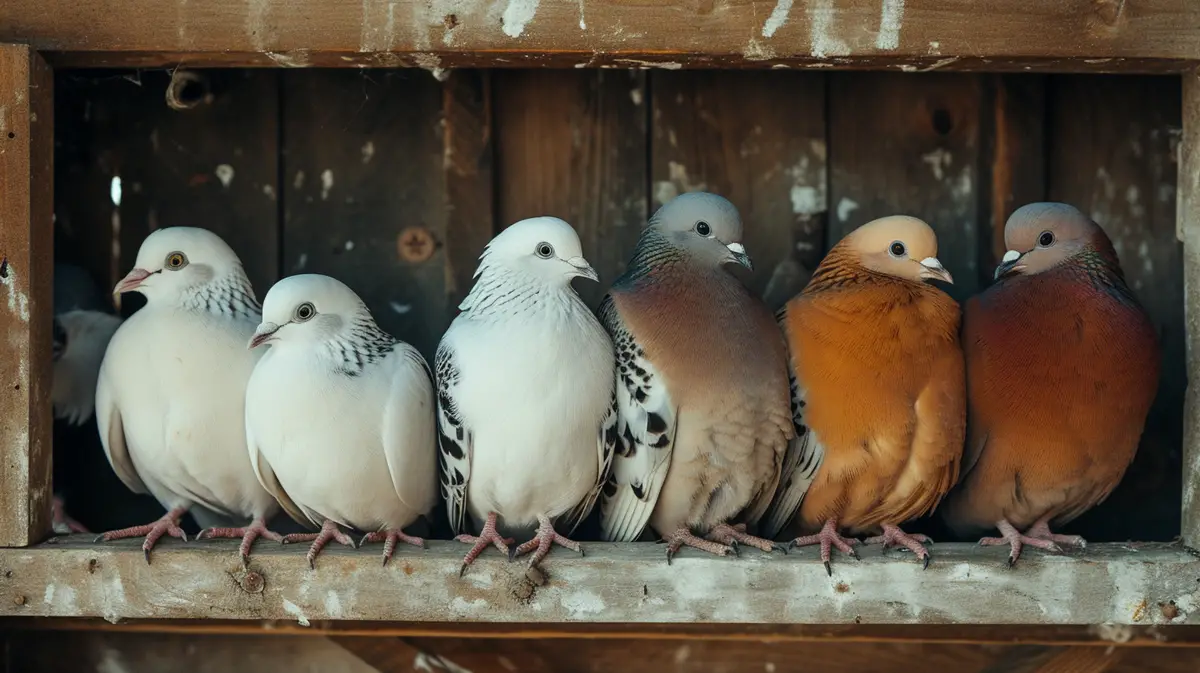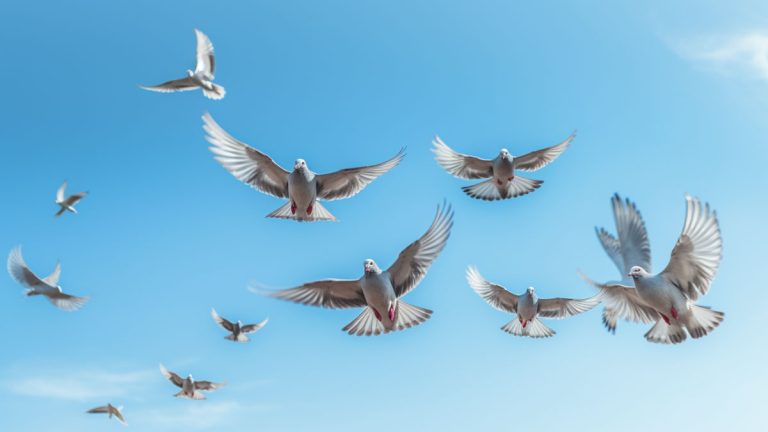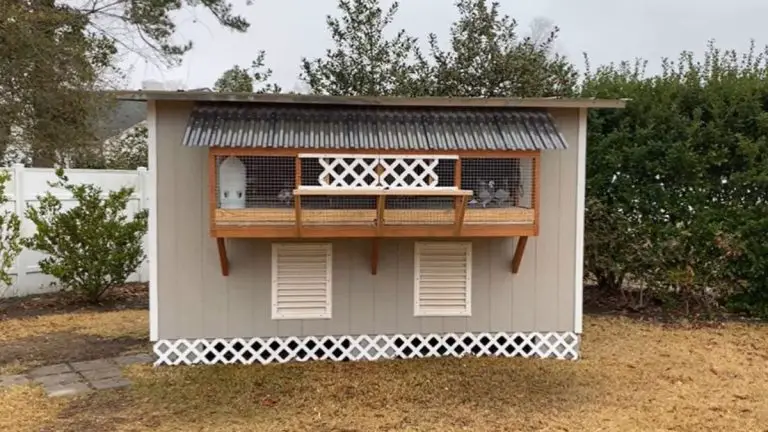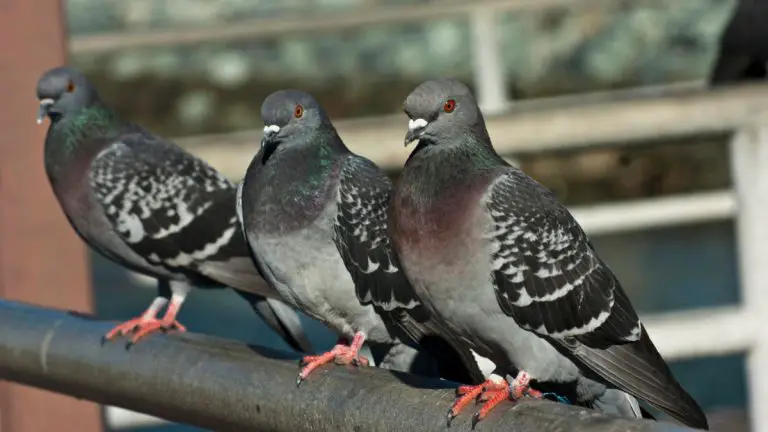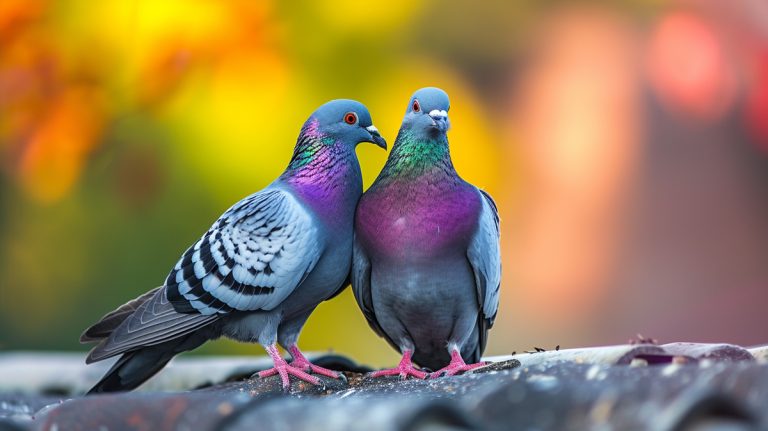Optimal Pigeon Temperature: Tips for Comfort and Care
Pigeons, those graceful and often overlooked birds that grace our skies, have some unique temperature requirements that are essential for their well-being. As an avid bird enthusiast, I have spent countless hours observing and studying these remarkable creatures, and one thing that has always fascinated me is how they adapt to different temperature conditions. In this article, I’ll delve into the fascinating world of pigeon temperature requirements, exploring how they regulate their body temperature and the factors that influence their thermal comfort. So, if you’ve ever wondered how these feathered friends stay comfortable in both scorching summers and freezing winters, keep reading to discover the secrets of their temperature preferences.
Pigeons are highly adaptable creatures, capable of thriving in a wide range of environments. However, like all living beings, they have specific temperature needs that must be met for them to remain healthy and content. Understanding these requirements is crucial for anyone who keeps pigeons as pets or simply wants to appreciate them in their natural habitat. In this article, I’ll share my knowledge and insights into the temperature preferences of pigeons, shedding light on how they cope with extreme weather conditions and what measures we can take to ensure their well-being. So, whether you’re a pigeon enthusiast or just curious about these resilient birds, join me as we explore the intriguing world of pigeon temperature requirements.
How Do Pigeons Regulate Their Body Temperature?
Pigeons are remarkable birds with the ability to adapt to a wide range of temperature conditions. But how do they regulate their body temperature? Let’s explore the fascinating ways these birds keep themselves warm or cool in different climates.
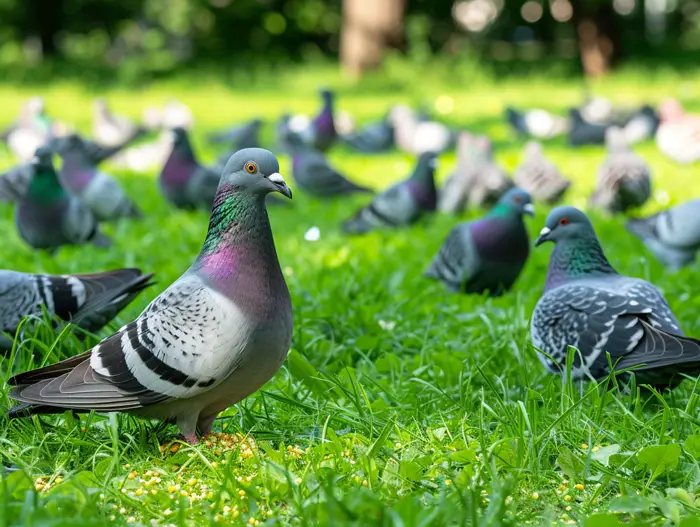
Insulating Feathers: Pigeons have feathers that act as excellent insulators. They have two layers of feathers – an outer layer of stiff feathers that repel water and an inner layer of down feathers that provide insulation. This helps them retain body heat in cooler temperatures.
Sunbathing: Pigeons love to bask in the sun! On colder days, they will often stretch out their wings and expose their bodies to the sunlight. This allows them to absorb the warmth, raising their body temperature and keeping them comfortable.
Panting: Just like dogs, pigeons can pant to regulate their body temperature in hot weather. By rapidly opening and closing their beaks, they increase airflow and help cool down their bodies through evaporation.
Bathing and Splashing: Pigeons also regulate their body temperature through bathing and splashing water. When it’s hot outside, they will find a source of water, such as a birdbath or a puddle, and splash water on their bodies. This helps them cool down as the water evaporates from their feathers.
Finding Shade: Pigeons are expert at seeking shade when it’s too hot outside. They will look for shaded areas under trees, buildings, or any other objects that provide shelter from the sun. By staying in the shade, they can avoid direct exposure to the sun’s heat.
Fluffing their Feathers: In colder temperatures, pigeons fluff up their feathers to create air pockets that act as additional insulation. This helps them trap warm air close to their bodies, keeping them cozy.
Huddling Together: Pigeons also have a behavior known as huddling. When it’s cold, they will gather together in groups, huddling closely to share body heat. This social behavior helps them stay warm during the colder months.
To sum it up, pigeons have a variety of mechanisms to regulate their body temperature. From insulating feathers to sunbathing, panting, and finding shade, they have developed remarkable strategies to adapt to different temperature conditions. It’s truly fascinating to see how these birds are able to thrive in various climates without the aid of human intervention.
Factors Influencing Pigeon Temperature Preferences

When it comes to regulating their body temperature, pigeons are highly adaptable. There are several factors that influence their temperature preferences in different climates. Let’s take a closer look at these factors:
1. Feather Density: Pigeons have a thick layer of insulating feathers that help them maintain their body temperature. In colder climates, they fluff up their feathers to trap a layer of warm air close to their bodies. This provides them with extra insulation and helps them stay warm.
2. Sunlight: Pigeons are known to sunbathe to absorb warmth. They position themselves in direct sunlight, which allows their bodies to soak up the heat. This behavior is commonly seen in colder climates where the sun’s rays provide much-needed warmth.
3. Preening and Bathing: Pigeons also regulate their body temperature through preening and bathing. By preening their feathers, they distribute natural oils that help to waterproof and insulate their plumage. Bathing and splashing water on themselves, especially in warmer temperatures, helps them cool off by evaporation.
4. Seeking Shade: Pigeons are smart when it comes to finding shade. In warmer climates, they seek shelter under trees or buildings to escape the direct heat of the sun. This provides them with a cooler environment and helps prevent overheating.
5. Huddling Together: In colder temperatures, pigeons often huddle together, seeking warmth from one another. This behavior allows them to share body heat and maintain a comfortable temperature even during chilly weather.
These factors play a crucial role in helping pigeons adapt to various temperature conditions. Their ability to adjust their behavior based on these influences ensures their survival and comfort in different climates.
By understanding how pigeons regulate their body temperature, we can appreciate their incredible adaptability and resourcefulness in the face of changing environmental conditions. Pigeons truly are remarkable creatures who have mastered the art of temperature regulation without any human intervention.
Remember, when it comes to pigeons and temperature preferences, nature has equipped them with amazing abilities to thrive in any climate.
During hot summers, pigeons have specific temperature requirements to ensure their well-being. As a bird expert, I have observed and studied how pigeons adapt to higher temperatures. Let me share with you some fascinating insights into how these birds regulate their body temperature during scorching summers.
Pigeon Temperature Requirements in Hot Summers
Pigeons are equipped with insulating feathers that help them maintain the right body temperature. In hot weather, pigeons take advantage of the sunlight to warm themselves up. They engage in a behavior called sunbathing where they position themselves to absorb the warmth of the sun’s rays.
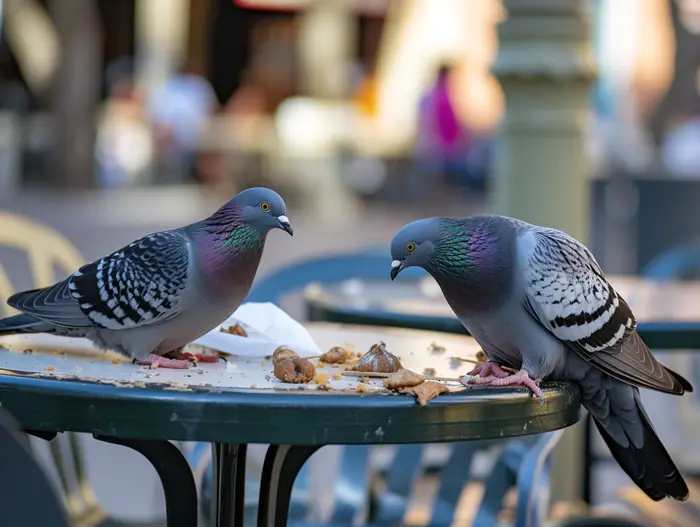
Panting and Bathing
To cool down their body temperature, pigeons rely on panting. Similar to dogs, pigeons take rapid breaths to release excess heat and regulate their body temperature. Additionally, pigeons also engage in bathing and splashing water on themselves. This process helps to cool off and maintain a comfortable body temperature.
Seeking Shade and Fluffing Up Feathers
When the summer heat becomes intense, pigeons diligently seek shady spots. They take advantage of tree canopies, rooftops, or other structures that provide relief from direct sunlight. Moreover, pigeons fluff up their feathers to create additional insulation, utilizing air pockets to trap cool air close to their bodies.
Huddling Together
Perhaps one of the most interesting behaviors of pigeons in hot summers is their tendency to huddle together. By gathering in groups, pigeons can share body heat and collectively regulate their body temperature. This social behavior not only helps them stay cool but also strengthens their social bonds.
Understanding pigeon temperature requirements in hot summers provides valuable insights into their remarkable adaptability in different climates. These clever birds make use of natural behaviors, such as sunbathing, panting, bathing, seeking shade, and huddling together, to ensure their comfort and survival.
As summer approaches, take a moment to appreciate the resourcefulness and ingenuity of pigeons as they navigate the challenges of high temperatures. By respecting their temperature needs, we can coexist harmoniously with these fascinating creatures.
Pigeon Temperature Requirements in Cold Winters

During the cold winter months, pigeons have specific temperature requirements to ensure their well-being. As temperatures drop, these adaptable birds employ various strategies to maintain their body heat and stay comfortable. Here is a look at how pigeons regulate their temperature in cold winters:
1. Insulating Feathers: Pigeons have a dense layer of feathers that provide excellent insulation against the cold. These feathers trap air close to their bodies, acting as a protective barrier against chilly temperatures. By fluffing up their feathers, pigeons create an extra layer of air pockets, further enhancing their insulation.
2. Roosting Together: Pigeons have the instinct to roost together in large groups during the winter months. By huddling close to each other on branches, rooftops, or other sheltered spots, they can collectively conserve body heat. This behavior allows them to maintain a warmer internal temperature by taking advantage of the combined warmth generated by their bodies.
3. Seeking Shelter: Pigeons actively search for sheltered areas during winter, such as under bridges, in barns, or even inside buildings. These protected spaces offer them respite from the biting cold winds and help maintain a more stable temperature. Pigeons are adaptable creatures and can find creative ways to keep warm during extreme weather conditions.
4. Limited Outdoor Activity: In colder climates, pigeons reduce their outdoor activity during winter. They spend more time sheltered in their roosting areas, minimizing exposure to harsh temperatures. By conserving their energy and staying in secure locations, pigeons can better cope with the cold and protect themselves from potential risks.
Understanding these temperature requirements in cold winters sheds light on the resilience and adaptability of pigeons. These remarkable birds have developed natural mechanisms to regulate their body heat and survive in even the harshest winter conditions. By respecting their needs and providing suitable shelter, we can coexist harmoniously with these fascinating creatures throughout the year.
Ensuring Optimal Temperature for Pet Pigeons
When it comes to keeping pet pigeons, it’s important to provide them with the right temperature to ensure their well-being and comfort. Pigeons are adaptable birds, but they still have temperature requirements that need to be met. Here are a few key considerations to ensure your pet pigeon’s temperature needs are met:

1. Suitable Shelter
Providing a suitable shelter is crucial in maintaining a stable temperature for your pet pigeons. The shelter should be well-insulated and protect the pigeons from extreme temperatures. Ensure that there are no drafts or areas where cold air can enter during the winter months. On the other hand, during hot summers, make sure the shelter has proper ventilation to prevent overheating.
2. Temperature Controlled Environment
If you live in an area with extreme temperatures, consider providing a temperature-controlled environment for your pet pigeons. This can be achieved through the use of heating or cooling systems in their shelter. Maintaining a stable temperature within the recommended range ensures the pigeons stay comfortable and healthy throughout the year.
3. Adequate Ventilation
Proper ventilation is crucial in maintaining a healthy environment for pet pigeons. Good airflow helps regulate the temperature and prevents the buildup of moisture, which can lead to respiratory problems. Make sure there are vents or windows in the pigeon’s shelter that allow fresh air to circulate, without subjecting them to direct drafts.
4. Temperature Monitoring
Regularly monitoring the temperature inside the pigeon’s shelter is important to ensure it stays within the optimal range. Invest in a reliable thermometer to keep track of the temperature and make adjustments if necessary. It’s recommended to aim for a temperature range around 60-75°F (15-24°C) for pet pigeons.
5. Water and Shade
During hot summer days, provide your pet pigeons with access to fresh water and shade. Pigeons cool themselves by drinking water and seeking shade to escape the heat. Place a shallow water dish in their shelter and make sure they have access to a shaded area where they can rest and cool down.
Remember, maintaining the optimal temperature for pet pigeons is crucial for their well-being and overall health. By providing suitable shelter, a temperature-controlled environment, adequate ventilation, monitoring the temperature, and offering water and shade, you can ensure your pet pigeons stay comfortable and thrive throughout the year.
Conclusion
Ensuring the right temperature for pet pigeons is crucial for their overall well-being. By providing suitable shelter and a temperature-controlled environment, we can create a comfortable space for our feathered friends. Adequate ventilation is also essential to maintain a fresh and healthy atmosphere. Regular temperature monitoring allows us to make necessary adjustments and ensure that our pigeons are always in a favorable environment.
In addition to temperature control, access to water and shade is vital for pigeons to regulate their body temperature effectively. By providing these essentials, we can help our pigeons stay cool during hot summer months and warm during colder seasons.
By understanding and meeting the temperature requirements of pet pigeons, we can ensure their comfort and enable them to thrive throughout the year. So, whether you’re a seasoned pigeon owner or considering getting one as a pet, remember to prioritize their temperature needs for a happy and healthy avian companion.
